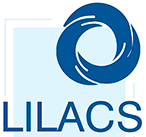Perceptions of treatment and barriers to access to health services in the Amuzga population
DOI:
https://doi.org/10.19136/hs.a24n1.5904Abstract
Objective. To analyze the access barriers to health services faced by the amuzga population of Xochistlahuaca, Guerrero, as well as the perception of the treatment they receive.
Materials and methods. The investigation has a qualitative design with a phenomenological perspective, based on interviews to users, non-users, and health providers of the Hospital from Xochistlahuaca, Guerrero. The information collection instruments used were participant observation and semi-structured interviews. A qualitative content analysis was carried out with the data.
Results. The Amuzga population of Xochistlahuaca faces cultural, geographic and economic barriers, as well as barriers related to the perceived quality of care. These are particularly expressed in the interaction with health personnel, where recurrent forms of mistreatment and discrimination are identified.
Conclusions. Health services are perceived as insufficient and inadequate, with discriminatory practices that affect their use and acceptability. It is recommended that culturally relevant interventions be implemented to improve the quality of treatment, eliminate all forms of ethnic discrimination and strengthen community participation. The national regulatory framework establishes the obligation to prevent and eradicate discrimination, as well as to guarantee equal treatment and opportunities.
Keywords: Barriers, Access, Health services, Indigenous population.
Downloads
Downloads
Published
Issue
Section
License
Copyright (c) 2025 Horizonte Sanitario

This work is licensed under a Creative Commons Attribution-NonCommercial-ShareAlike 4.0 International License.


































